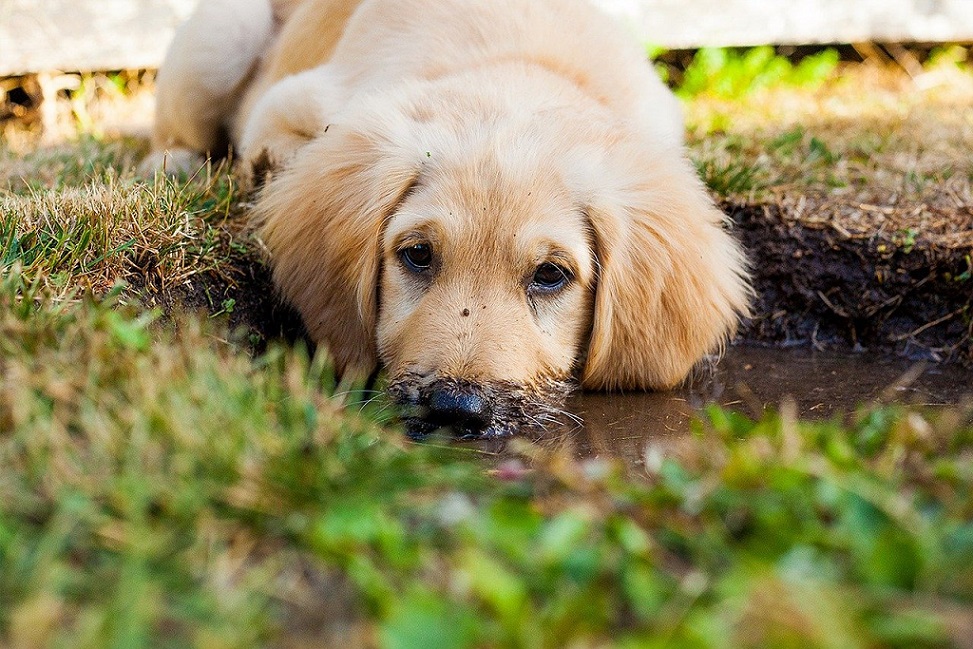If you own a pet dog, you will probably know how much these animals love being outdoors. You can take it out for a walk, make it exercise in the backyard, or simply leave it to have a good time on the lawn.
But wait, leaving your dog on the lawn often can take its toll on the curb appeal of your living space. Your pet dog can cause damage to it in more than one way, and you will have to invest in extensive repairs and improvement in the long run.
There may also be one or more plants in your lawn that are toxic to dogs, so make sure you do not have any plants in your lawn that may be toxic to your dogs.
How to deal with it? Well, awareness, prevention, and timely repairs can make all the difference. So, here is all that you need to know about the damage your pet dog can inflict on your garden.
Table of Contents
Digging
Digging is a high-impact behavior that can cause extensive damage to your lawn. The extent depends on how deep the animal digs. It may only scrape away the grass from the surface or even dig deep holes with its paws. No matter how minor the issue is, it is always painful to see ugly patches in your garden.
Most pet dogs do it only for entertainment, so the best alternative is to keep the animal engaged when it is outdoors. Avoid leaving it alone if you suspect that it will create a mess if you aren’t around. Consider sectioning off the areas where you do not want the dog to enter.
It may also be a result of separation anxiety in your dog so in such a case, it is better to see your vet ASAP.
Also, remember that certain breeds are known for their digging behavior and they are more likely to dig your lawn than other breeds. Some of these breeds are Dachshund, Beagle, Siberian Husky, and Terrier breeds.
Related: My Dog Chases Tail, What Should I do?
Pee and poop stains
While dog urine and feces may not sound as big a concern as digging, they can cause adverse damage to a lush green lawn. Urine is high in nitrogen, and frequent urination by the pet can cause yellow or brown spots on the grass due to excess nitrogen.
To figure out this issue, you will have to invest some effort in fixing dog urine spots on your lawn, so it is better to keep the animal from peeing or pooping here in the first place. Take the dog out for walks and train it to pee and poop there. Training your dog is a better option than dealing with the damage they cause by peeing and pooping in the garden.
Experts suggest that you should potty-train your dogs from an early age and train them to use their specific spot when they are in need to empty their bladders and bowel.
Related: My dog eats poop, what should I do?
Compaction
A less evident form of damage that becomes visible only after some time is compaction. It is the result of stress that comes when the dog moves around a specific path regularly. Being creatures of habit, dogs tend to stick to a fixed path as they move around or play on the grass. While frequent footfall will not wear out the grass early, the damage often occurs when the grass is thinning out in an area.
Fortunately, the issue is reversible, and aerating the lawn can address it to a significant extent. You can simply create small holes in the soil using a garden fork for aerating it. Moreover, healthy turf cushions the soil, and occasional activities like animal traffic wouldn’t harm it at all.
Keeping an eye on your pet dog when it is outdoors is vital, and so is training it to steer clear of damaging activities. While regular maintenance of the garden is enough to keep it in good shape, you should address the damage at the earliest.
Bottom line:
The bottom line of this informative article is that dogs come with lots of responsibilities, especially the first 18 to 24 months are very important. If you train your fur baby well during this time, you may not face the above-mentioned embarrassing and irritating situations. If somehow, your dog had an accident in-home or lawn, try to figure out the problem calmly instead of being aggressive and rude to your dog.
Recommended read – Hairless French Bulldog – Eye-opening Facts

